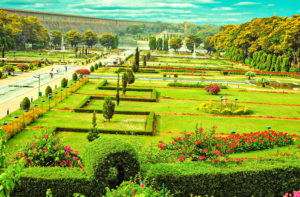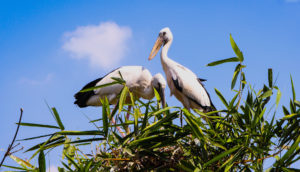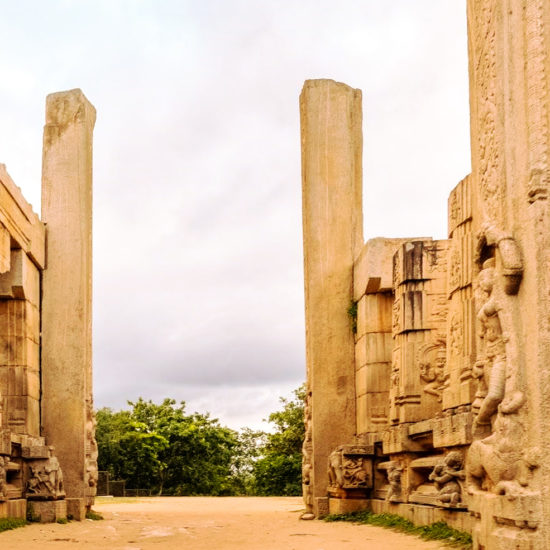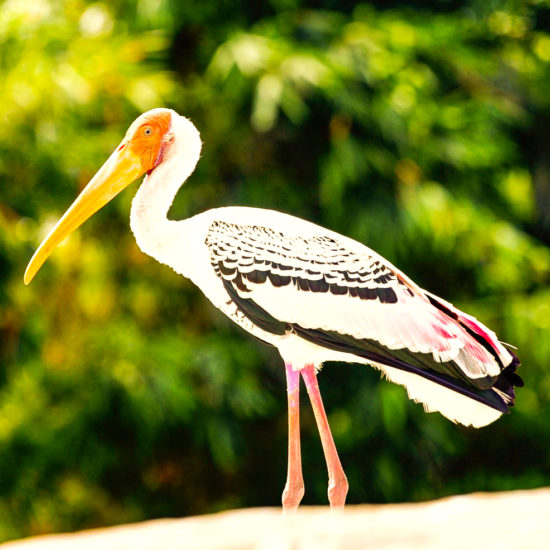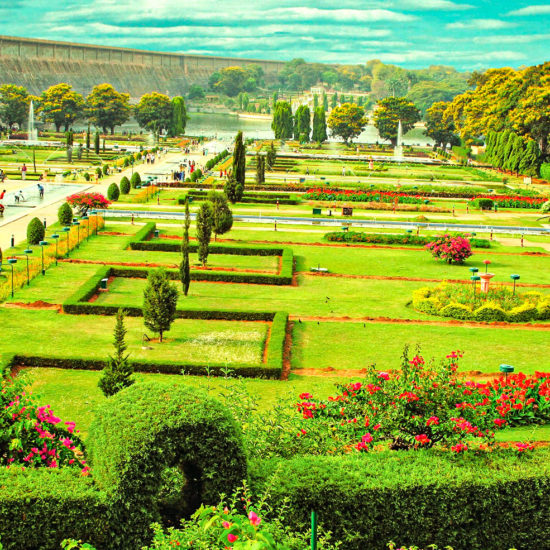Geographically, Mandya is surrounded by Tumkuru in the north, Ramanagara in the east, Chamrajanagara and Mysuru in the south and Hassan in the west. Mandya is also known as the land of five rivers due to the presence of the rivers Cauvery, Hemavathi, Shimsha, Veeravaishnavi and Lokapavani. These rivers give Mandya both religious importance and scenic beauty. Mandya has been ruled by many dynasties like Gangas, Cholas, Hoysalas, Vijayanagara, Prabhus of Nagamangala and Wadiyars but the major influence has by Hyder Ali-Tipu Sultan regime as they had their capital in Srirangapatna. Few prehistoric settlements have also been found in these areas that include Pandavapura, Kuntibetta and Belakavadi. Mandya also has links to the Indian epics Ramayana and Mahabharatha.
Mandya is one of the most agriculturally prosperous districts in Karnataka. With the advent of irrigation from the KRS reservoir during 1930’s, there was substantially marked transformation in cropping pattern, and better grown yield level, ultimately leading to better economic conditions of the people. The major crops include Ragi, Paddy and Pulses like Horse gram. But the main crop is Sugarcane. Jaggery and Sugar industries contribute a major chunk to the local economy and hence Mandy is also popular as “Sakkare Nagara” (City of Sugar).
In terms of tourist attractions, Mandya is always in the tourist itinerary list as most people visiting Mysuru visit few of the attractions here due to its proximity. KRS Dam and Brindavan Gardens is perhaps the biggest tourist attraction apart from Shivanasumudra Falls, Srirangapatna, Ranganatha Swamy Temple, Ranganathittu Bird Sanctuary among others.
Maddur Vada is a famous delicacy from Mandya district which is best enjoyed with a hot cup of filter coffee.
For further information, visit the official district website click here!
Heritage Sites
- Srirangapatna: Though Srirangapatna was the capital of the Kingdom of Mysuru for a long period, it is a town that has Tipu Sultan’s mark indelibly stamped on it. This island fortress, from which Tipu waged war against the British, has his summer palace, which is now a museum. The other attractions here are the Jama Masjid, dungeons, a gunpowder room and the Gumbaz where Tipu and his father Hyder Ali are buried.
- Pandavapura: Pandavapura is situated 28 km west from Mandya. This was a camp place for the French army during the reign of Hyder and Tipu. Hence, it is also called as ‘French Rocks’. Pandavapura is associated with events related to the Mahabharata. It is believed that the Pandavas during their stay in the forest, after escaping from the wax palace, camped on a hill here called ‘Kunti Betta’ (Kunti's Hill). Therefore, it is also referred as ‘Pandavapura’. The Kunti Betta is not a single hill but a chain of many peaks spread over an area of several miles. The peaks are locally named Kunti Betta, Bheemana Betta (Onake Betta), Bakasura Betta as these peaks attach themselves with the legends of Kunti, Bheema and Bakasura. On the Kunti Betta are a Shiva temple, a tank referred as Kunti Kola with clear water, Bheemana Bandi and Bheemana Pada. At the foot of Kunti Betta are temples dedicated to Dakshinamurthy and Mallikarjuna along with a school, a hostel and a Kalyana mantapa.
Nature & Wildlife
- Ranganathittu Bird Sanctuary: Declared a sanctuary in 1940 at the behest of the famed ornithologist Dr. Salim Ali, the Ranganathittu Bird Sanctuary is a paradise for bird watchers and nature lovers, spread across a small area of 0.67 sq km. Located on the banks of River Cauvery, this bird paradise is the preferred nesting ground for the resident birds as well as migratory species from the Europe, Americas and Siberia. Go boating on the river, get a fascinating view of the various species of birds, and catch a glimpse of the marsh crocodiles in the water at this avian haven.Most commonly seen bids are painted stork, kingfishers, cormorant, darter, herons, wild ducks, river tern, cattle egrets, Indian roller, ibis, common spoonbill, great stone plover and pelicans.
- Kokkarebellur Pelicanry: During November - December, a quiet village in Mandya comes alive with the arrival of spot-billed pelicans and painted storks. Bird watchers and nature enthusiasts from around the world make a beeline to this tiny hamlet to witness the spectacle every year. Apart from the pelicans, the other birds found nestling and breeding in the village trees are cormorant, black ibis, grey heron, black-crowned night heron and Indian pond heron. Moreover, the village farmers thrive on the bird’s droppings, as they are rich in potassium. The villagers use these bird droppings as manure for their cultivation. It is fascinating to observe the birds living in perfect harmony with the villagers and enjoying their protection.
- Shivanasamudra: The combination of forested hills and lush green valleys form the perfect setting for the roaring waters of Cauvery to plunge 75m into a gorge at Shivanasamudra. Explore this region in the monsoon season to witness River Cauvery cascading down in two picturesque waterfalls which is a treat to watch, known popularly as Barachukki and Gaganachukki. Shivanasamudra is home to India's first hydroelectric plant set up in 1902, to supply power to Kolar Gold Fields.
- Cauvery Wildlife Sanctuary: A protected wildlife area spanning Mandya, Ramanagara and Chamarajanagar districts, covering 510 sq kms. Jackals were spotted for the first time recently in Cauvery Wildlife Sanctuary.
- Adichunchanagiri Peacock Sanctuary: Located adjacent to the famous pilgrim centre of Adichunchanagiri, the sanctuary is located in Nagamangala Taluk and has an area of around 88.4 hectares. The sanctuary has a healthy population of peacocks mainly due to the excellent protection accorded by way of strong religious sentiment of Adhichunchangiri Mahasamsthana Math and their disciples. It is also estimated that the sanctuary has around 99 species of birds, 32 species of butterflies, and several species of reptiles and amphibians.
- Balamuri Falls: Small but scenic falls 12 kms from Srirangapatna. Water cascades over manmade check dam creating light and pleasant stream safe and convenient to get into
- Hemagiri Falls: About 10 kms from KR Pete, a dam and falls on Hemavathi river makes Hemagiri falls an ideal picnic spot.
- Bheemeshwari Nature and Adventure Camp: Bheemeshwari Nature and Adventure Camp is a unit of the state-run Jungle Lodges & Resorts. Whether it’s action-packed adventure or just a chance to get closer to nature, Bheemeshwari Nature and Adventure Camp is just the place for it. A range of adventurous activities from zip line, rope walking, kayaking, etc. are available here. The best time to visit is just after the monsoons, between August and February, when the Cauvery River is full flow and the forest is thick and verdant.
- Shimsha Falls: A 200 ft waterfall of river Shimsha, located at Shimshapura, 25 kms from Malavalli. Has a hanging bridge visitors can walk upon.
Tourist Attractions
- Krishnaraja Sagara Dam (KRS): The engineers and planners of the erstwhile Mysuru State had envisioned this dam, with many objectives in mind like providing drinking water to Mysuru/ adjacent places, to supply water to the hydro-electric power station at Shivasamudra and for a continuous supply of Cauvery water for irrigational purposes. Due to the hard work and expertise of great visionaries like Bharat Ratna Sir M. Vishweshwaraya, T Ananda Rao, Sir Mirza Ismail and other engineers. the dam work was completed between 1911-1932. The dam is 8600 feet in length and 130 feet in height.
- Brindavan Gardens: Spread across an area of 60 acres, Brindavan Gardens is at the bottom of the Krishnaraja Sagara Dam (KRS), across the river Cauvery. Modelled on the Shalimar Gardens of Kashmir, the garden entices visitors with its lush green lawns, terraces, flower beds, topiary and multihued fountains. Today, the Brindavan Gardens is world famous for its ethereal beauty and grandeur. An endless expanse of green, dotted with colourful blooms, the terraced gardens are well laid and admired for their symmetrical design. The highlight for visitors, however, is the famed musical fountain which is a water ballet of sorts, with lights and music and is played every evening for the tourists.
- Satyagraha Soudha, Shivpura: A monument to mark the freedom struggle at Maddur located on Bangalore - Mysore Highway. It was built to commemorate the Shivapura Flag Satyagraha of 1938.
Religious Places
- Cheluvanarayana Swamy Temple, Melkote: Known for the shrines like Yoganarasimha Temple, various Mathas and the Academy of Sanskrit Research, Melkote is a scenic hill town and an important pilgrim centre in Karnataka. The crowning jewel of Melkote is the Cheluvanarayana Swamy Temple, with a collection of crowns and jewels which are brought to the temple for the annual festival. Legend has it that Ramanuja, the Vaishnavite saint, recovered the lost idol of the main deity and installed it here. The main attraction here is the annual Vairamudi Brahmotsava festival when the deity is adorned with the magnificent diamond studded crown offered by former Maharajas of Mysuru and taken out in procession. There are many other temples here including seven Anjaneya temples, four Garuda temples, a Pancha Bhagavata temple, Venkataramana temple as well as the new Venkateshwara temple, among various other temples.
- Vairamudi Brahmotsava Festival: The sleepy town of Melkote comes alive during the annual Vairamudi Brahmotsava, when the deity of the hill shrine Lord Vishnu is adorned with the legendary diamond-studded crown embedded with precious gems. Legend has it the crown has been brought by Garuda (Lord Vishnu’s vehicle) which is adorned on the festive image of the beautiful deity Cheluvanarayana, flanked by Sridevi and Bhudevi. This night long event, which is part of the 10- day Vairamudi Brahmotsava festival is witnessed by thousands of devotees.
- Ranganatha Swamy Temple, Srirangapatna: An inscription reveals that the temple of Sri Ranganatha was built by a Ganga chieftain by name Tirumalaiah in 984 AD. It has both Hoysala and Vijayanagara styles of architecture. The main deity here is a colossal image of Lord Vishnu (in form of Ranganatha) reclining on the coils of Adisesha (the thousand headed divine Serpent who is also the King of Snakes) whose widespread seven hoods form a canopy for the Lord. Lord Vishnu here is flanked by Goddess Sridevi, Goddess Bhudevi and Lord Brahma at His nabi (naval). At his foot is the seated image of Goddess Lakshmi identified as Kaveri. There are many sub-shrines within the complex dedicate Narasimha, Gopalakrishna, Srinivasa, Hanuman, Garuda, Ranganayaki, Sudersana Chakra and Alwars.
- Sri Kshetra Adichunchanagiri: The seat of the Swamy of the Vokkaliga community - Sri Adhichunchangiri Mahasamsthana Math, this small town is a noted center of Bhairava worship. Lord Gangadhareshwara is the presiding deity here along with four other avatars (incarnations) of Lord Shiva namely Lord Malleshwara, Lord Kattale Someshwara, Lord Gavi Siddeshwara & Lord Chandramouleshwara. This temple complex also comprises other deities like Lord Ganapathi, Goddess Sthambhambika Devi, Lord Subramaneshwara, Goddess Mallamma Devi among others. A new Kalabhairaveshwara Temple is built here at Sri Kshetra Adichunchanagiri. The temple has the width of 18-feet and the total height of 21-feet. It consists of 128 pillars with well sculpted panels depicting different deities and their divine vehicles.
- Venkataramanaswamy Temple, Karighatta: Karighatta is situated around 5 km from Srirangapatna and is located on the bank of the Lokapavani River. The place is a delight to nature lovers as it has a high hill (2697 feet). It is also a significant place for Hindu devotees because of the Venkataramanaswamy Temple. The top of the hill can be climbed by a steep curved road on vehicle or by foot. It is believed that the Venkataramanaswamy Temple was built during the reign of Mysore Kings (Raja Odeya). This temple complex has temples of Venkataramana, Lakshmi and Rama-Lakshmana-Sita. A Garuda sculpture is placed in the Garuda mantapa in front of the temple. Towards the right is the Padmavathi Temple and to the left Hanuman Temple.
- Aghalaya: Home to Hoysala style Mallesvara temple.
- Basaralu: Home to famous Hoysala style Mallikarjuna temple
- Bellur: Home to Gowresvara temple, Mule Singesvara temple, Virabhadra temple, Madhavaraya and Kalleshwara temple.
- Bindiganavile: Home to Hosyala style Keshava temple and Shiva temples. Popular spot to watch peacocks.
- Govindanahalli: Home to Hoysala style Panchalingeshwara temple and Venugopala temple. Govindanahalli also holds a popular cattle fair in the region.
- Hariharapura: Home to Hariharesvara, Lingabasaveshvara, Anjaneya, Ganapathi, Bhairava and Viranjaneya temples. Hariharapura also has a Durgah, a mosque and an old fort
- Hosaholalu: Home to Harishareshwara temple, Lakshminarayana temple and Viranjaneya temple
- Kambadahalli: A great Jain centre with Panchakuta Basadi, Shantinatha Basadi and other Jain monuments and sculptures.
- Brahmeshwara Temple, Kikkeri: Situated about 14 km from Krishnarajapete taluk, this temple is a fine specimen of Hoysala architecture. It is believed to be constructed in 1171 AD. The temple is dedicated to Lord Shiva in the form of a Shivalinga. An intricately carved Nandi statue is at the entrance which is finely carved with great details.
- Maddur: Popular for Narasimha Temple,Madduramma temple, Desesvara temple and Varadarajaswamy temple. Maddur Vada is a mouth watering snack.
- Mandya: District headquarter and home to Janardhana Swamy temple.
- Marehalli: Popular for Chola era Lakshmi Narasimha temple
- Nagamangala: Home to Yoga Narasimha, Sowmya Keshava, Kallamma, Bhadrakali, Bhuvanesvara and Bagagodamma temples. Nagamangala also has a 13th century fort and several ancient monuments.
- Tolachi: Home to Ankeshwara temple of Hoysala Era
- Tonnur: Popular for Tulabhara Seve- a ritual where devotees balance their weight with valuable materials. Tonnur has two famous temples- Yoganarasimha and Nambinarayana.
- Varahanatha Kallahalli: Home to a Hoysala era temple with a huge Varahaswami image, situated very close to Krishna Raja Sagara reservoir.
Tour Location
Mandya is well connected by rail and road network from Bengaluru and Mysuru.

Eco:
Chukki Mane
Javanagahalli, Malavalli Taluk Mandya District, Karnataka, India Contact Number: +91 7676180470 / +91 80 4150 7556 Website: Click hereJLR Bheemeshwari Adventure Nature Camp
Bheemeshwari, Byadarahalli Post Halgur Hobli, Malavalli Taluk, Mandya District Around Bangalore - 571 421 Karnataka, India Manager:Mr. Ravindranath Contact Number: +91 9449597885 H.O:+91 80 40554055 Email ID: info@junglelodges.com Website: Click here
Premium:
Mayura Riverview
Mysuru Road, Srirangapatna, Mandya Contact Number: +918236297114Hotel Surabhi
Nikhara Garden Resort
Royal Orchid Brindavan Gardens

Medium:
Sai Residency
SSR Residency




